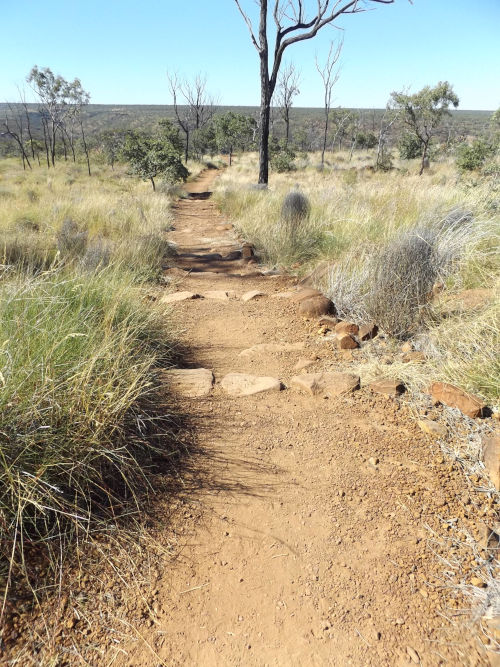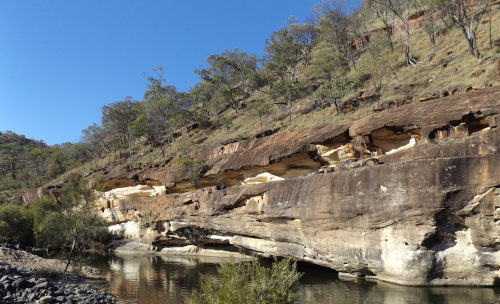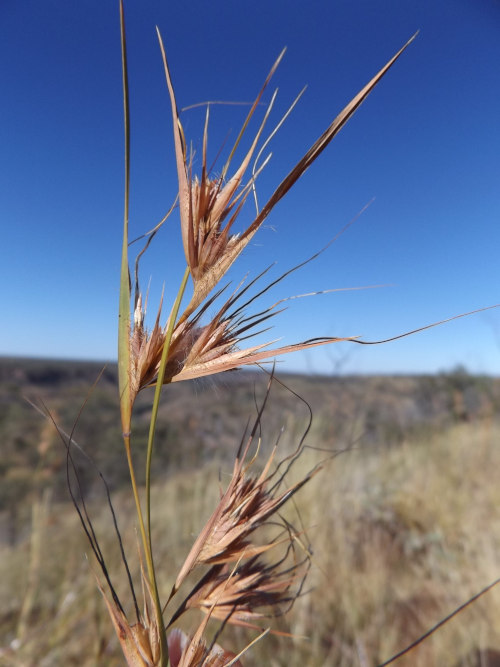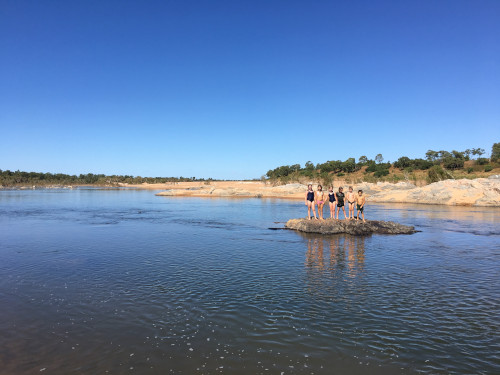
Why we need non-digital ways of remembering and sharing our experiences
Updated Oct '24 | Approximately a 6 - 7 minute read
There are aspects of story telling and story receiving that can't be captured or delivered digitally. When someone says, “Remember that camping trip?” they're recalling a host of felt perceptions and experiences that have shaped the relationship you share and become part of who you are.
More...
Recently (this post was originally written in June 2018) my kids and I joined some other homeschooling families on a camping trip in outback Queensland, to follow part of “Australia’s Dinosaur Trail.”
Visiting the Hughenden Museum during our trip, we saw a short movie describing the formation of beautiful, ancient Porcupine George, a popular bush camping spot north of Hughenden. The movie spanned time, from the Big Bang all the way to the present day, describing the geological forces that shaped the layers of rock that one can see in Porcupine George.
It was a good movie, but I couldn’t help wondering how much more easily our children might have understood it, had they heard that story from a person rather than seen it on a screen.
Imagine a dusty, fire lit stage beneath the stars
Rather than an air-conditioned room and a screen flashing words and images I imagined a wise old person, painted and adorned, beside a campfire beneath the spectacular stars of those clear inland skies.
I imagined this person telling the story in concrete body language and voice tones and well-crafted symbolism.
Perhaps the story teller would use holistic metaphors as much as linear facts – metaphors that might then lie quietly within the listener, waiting to unfold layers of meaning for them throughout the coming stages of their lives.1

What are the implications of relying heavily on digital ways of recording and sharing our stories?
Oral tradition among First Australians is known to reach back, accurately in terms of their descriptions of the land forms around them, at least as far as 10,000 to 12,000 years and possibly much longer.
Thousands of years’ worth of wisdom, experience, and perspective, captured in story, song and dance, retaining accuracy generation upon generation.
In contrast, I can’t remember what I did before lunch yesterday. With so many ways we can now record and pass on information, we no longer need to be able to remember and share our stories in the ways we once did.
Or do we?
Information can now be recorded without us retaining it as part of who we are -- which means that some of the richness, depth and complexity we would once have embodied is now stored outside of our selves, on digital devices. Does that matter?
I believe it does matter. Something of the life and power of our stories is lost when we hand story telling over entirely to digital media. And we ourselves are less complex beings with our stories separated from us as disconnected bits of data.

Let electronic media enhance, not replace, older ways of sharing
Yes, here I am - writing to you and sharing my thoughts via digital media.
I enjoy and use digital media as much as anybody does. Modern media has enabled me to read material, hear music, and see movies that have moved me deeply, changed me, and made me richer. And important, powerful stories can be shared more widely with the help of digital media.
But let that not blind us to the slow, quiet power of a living story, simply told, on an earthen stage beneath the sky.
To give an example of keeping oral and embodied traditions alive in a modern context, our homeschooling group goes camping together 3 or 4 times each year, and on the Saturday evening of each camp the kids put on a concert. The group has been doing this for over 30 years, and most of the skits the kids perform are repeated year on year, as the older kids pass them on to the younger ones.
What are our children learning here? They're building the neural networks and skills required for story, song, dance, and improvisation; they are learning that to perform for or speak to a group is a natural (not terrifying) thing to do; they're practicing tolerance for mis-takes; and they're receiving an experience of continuity, identity, and belonging.

How digital cameras remove us from what’s real
In a very amateurish way, I enjoy the challenge of trying to capture something beautiful in an image. But I’m beginning to recognize a downside to having a camera with me everywhere I go: it's so easy to be distracted from the experience at hand by a desire to photograph it.
Why do I get caught up in the desire to take the perfect photo of what I’m seeing? Several reasons, but one of them is so that I can earn some approval when I show the photo to someone else.
During our camping trip, one morning I left my kids with other parents for a short time and went to sit alone on the lookout above Porcupine George.
It was blissful, but even while I sat there on the ridge, I knew I was not fully present. Part of me was already in the future, showing off my photos to someone whose good opinion might make me feel fleetingly better about myself.
The earth, the top of that ancient ridge, the buffeting wind and the scratchy grasses and the scurrying ants and the timeless sky – those are things I had an opportunity to be with.

By not being fully there, I missed an opportunity to allow them to nourish the part of me that lies deeper inside me than the need for recognition or approval.
Standing aside from the earth and wind and the sky in order to photograph them, part of me was working on earning points in the “I’ve been to at least as many interesting and zen-like paces as you have” game.
Capturing images of an experience, if it prevents us from being in the experience, is a surface game. Digital images as an art form are one thing (a wonderful thing) but collecting images in order to earn likes on Facebook takes us out of the deepest parts of ourselves and leaves those parts un-nourished.
A category of “otherness” that keeps us eternally searching
You might be going to say: Wasn’t I just taking pics so I could remember?
Well, yes, I was. Partly.
But in feeling the need to use a digital device to get more from the experience I was also expressing a lack of receptiveness and trust. A lack of connection to the moment and to the earth and sky as something to relate to and integrate with.
I was placing them in a category of “otherness,” entities to stand aside from and observe as outside myself as something to capture on film rather than something to be with or be part of.
Such a "not part of me" way of experiencing the natural world may keep us eternally searching for a missing piece of ourselves.

Electronic media bypasses the brain regions that make us human
I suggested earlier that relying too much on digital devices impoverishes us by reducing the complexity and richness of our experiences down to bits of data.
Brain research also shows very clearly that inappropriate use of digital media interferes with the development of the regions of our brain that are responsible for the traits that make us human.
The fast moving, compelling imagery of electronic media activates the fast, effortless, reactive neural pathways in the older, "reptilian" and "paleo-mammalian," parts of our brains.
The more recently evolved parts of the human brain (responsible, among other things, for abstract thought and voluntary attention) are required for the learning and sharing of information in story, song and dance.
The more we rely on screens to teach and entertain our kids and ourselves, the more we undermine our capacity to integrate the riches of the experiences that contribute to who we are.
Sources
Parenting in the Age of Attention Snatchers by Lucy Jo Palladino, PhD.
Buddha’s Brain: the Practical Neuroscience of Happiness, Love and Wisdom by Rick Hanson PH.D. and Richard Mendius MD
Please leave a comment 🙂
please scroll down below the Endnotes to share your thoughts...
would you like to receive regular posts like this in your inbox?
after clicking subscribe, sit tight for a confirmation message
Endnotes
- "Oral Tradition: Passing Down Stories in Indigenous Communities," tells of oral traditions in New Zealand, the Arctic, and the Amazon, which preserve and teach morality, inter-relationship between people and nature, hunting and gathering knowledge, animal behavior, natural systems, and more.
